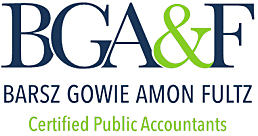When it comes to non-spousal IRA inheritance, there’s a lot to unpack. Individual Retirement Accounts (IRAs) are a common retirement savings tool, but the rules shift when you’re inheriting one not from your spouse. This guide will walk you through the essentials of non-spousal IRA inheritance, including real-life case studies and comparisons with other inheritances.
Understanding the Basics of Non-spousal IRA Inheritance
Before diving deep into non-spousal IRA inheritance, it’s vital to grasp the foundational IRA principles.
Traditional vs. Roth IRAs
In a traditional IRA, contributions are tax-deductible, meaning you’re taxed only upon withdrawal. The specific tax rate will depend on your income bracket at the time of withdrawal. Conversely, Roth IRA contributions are post-tax, so withdrawals are typically tax-free.
Required Minimum Distributions (RMDs)
Required Minimum Distributions (RMDs) are the minimum amounts that must be withdrawn annually once you reach a certain age. An RMD is calculated for each account by dividing the prior year’s December 31 balance of the IRA by a life expectancy factor that the IRS publishes. The IRS allows additional time to take your first RMD. You can wait until April 1 of the year following the year you turn 73 to distribute it. For traditional IRAs, RMDs are now required at age 73 due to the passage of the SECURE 2.0 Act. As of 2023, Roth accounts have no RMDs during the account holder’s life. You must still take RMDs from designated Roth accounts for 2023, including 2023 payments due April 1, 2024.
It’s essential to note that if the original IRA owner was subject to RMDs and did not distribute the full amount before death, the undistributed amount must be distributed according to the 10-year rule if not immediately distributed. Essentially, the 10-year rule states that the beneficiary must liquidate the account by the end of the 10th year following the year of the IRA owner’s death. An RMD may be required in years 1-9 when the decedent has already begun taking RMDs.
Distinct Rules for Non-spousal IRA Inheritance
The relationship between the original IRA owner and the inheritor, especially in cases of non-spousal IRA inheritance, dictates the IRA’s operational rules. Factors like whether RMDs had begun also play a role.
For spouses, inheriting an IRA is straightforward. They can treat it as their own or even roll the inherited assets into an existing IRA. However, non-spousal IRA inheritance comes with specific rules.
Comparison with Other Inheritance
Inheriting an IRA differs from other assets. For instance, inheriting real estate might involve property taxes and maintenance costs, while stocks might come with capital gains implications. With non-spousal IRA inheritance, the tax implications and RMD rules are the primary considerations. Beneficiaries have several options when inheriting an IRA. They can transfer the funds to an inherited IRA, take a lump-sum distribution or, in some cases, decline the inherited IRA.
Eligible Designated Beneficiaries in Non-spousal IRA Inheritance
Some individuals, termed “eligible designated beneficiaries” or EDBs, have unique distribution options. EDBs can be those younger than the deceased by less than ten years, the chronically ill, disabled or the deceased’s minor children. They can stretch RMDs over their, or the original owner’s, life expectancy. Non-spouse designated beneficiaries must roll the assets over to an inherited IRA and typically must withdraw all the money within ten years.
Tax Implications of Non-spousal IRA Inheritance
Inherited traditional IRAs come with tax obligations. They are taxed at the beneficiary’s ordinary income rate. In contrast, Roth IRAs, given they were open for at least five years, offer tax-free distributions. Not adhering to the rules can result in penalties. If an RMD is not withdrawn before the applicable deadline, an excess accumulation penalty of 25% of the RMD amount applies. If the beneficiary withdraws the RMD with a correction window of less than two years, the penalty can be reduced to 10%.
Strategies for Non-spousal IRA Inheritance
Understanding non-spousal IRA inheritance nuances can maximize benefits and avoid pitfalls. Beneficiaries can transfer their inherited IRAs, consider their tax bracket when withdrawing, and leverage charitable distributions.
Case Study 1: Alex’s Inheritance of a Traditional IRA
Alex, a 38-year-old software engineer, inherited a traditional IRA from his godmother, Elaine. The IRA was valued at $200,000. When he made withdrawals, they were taxed based on his income bracket. Alex also discovered the ten-year rule, meaning he had a decade to withdraw the entire amount. To navigate this, he sought advice from a financial planner and his accounting team. Together, they devised a strategy to spread the withdrawals, minimizing the tax hit and allowing the investments to grow. By the end of the ten years, Alex had not only withdrawn the entire amount but also managed to fund his daughter’s college education with the inheritance.
Case Study 2: Priya’s Journey with an Inherited Roth IRA
Priya, a 50-year-old schoolteacher, received a letter one day informing her of an inherited Roth IRA from her old music teacher, Mr. Thompson. The IRA was worth $120,000. Since Roth IRA contributions are made post-tax, her withdrawals would be tax-free. Mr. Thompson had not started his RMDs, so Priya wasn’t bound by them. However, she still had to adhere to the ten-year rule for withdrawals.
With the help of a financial advisor and her accountant, Priya set up a plan to make periodic withdrawals, ensuring she maximized her inheritance. By the time she retired, the Roth IRA had significantly bolstered her retirement nest egg.
Seeking Professional Advice on Non-spousal IRA Inheritance
The complexities of non-spousal IRA inheritance necessitate expert guidance. While this article offers a comprehensive overview, it does not replace speaking with one of our expert accountants. Contact us, and we’d be happy to help guide you.




